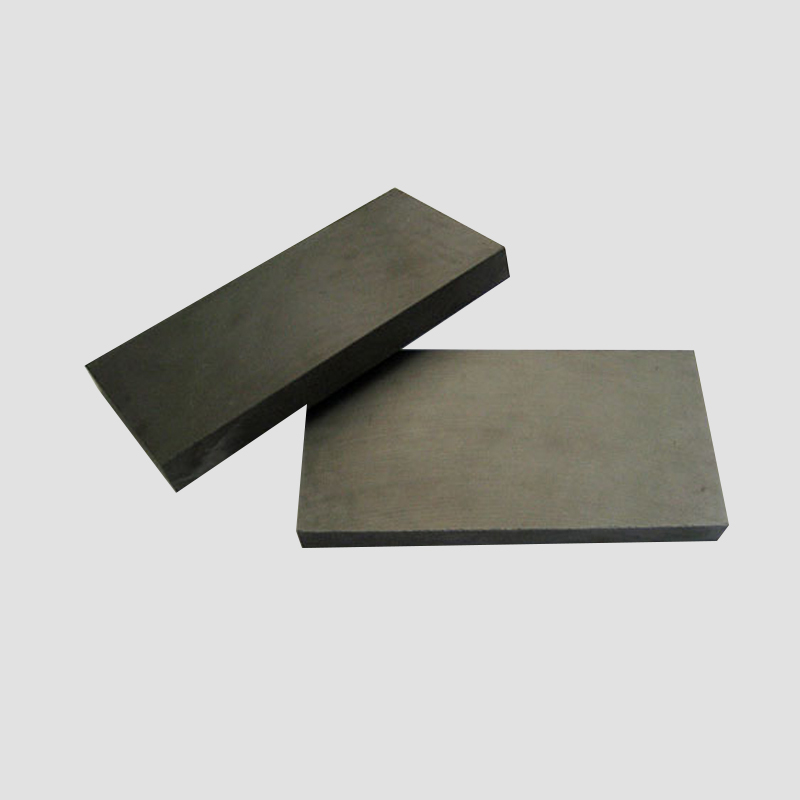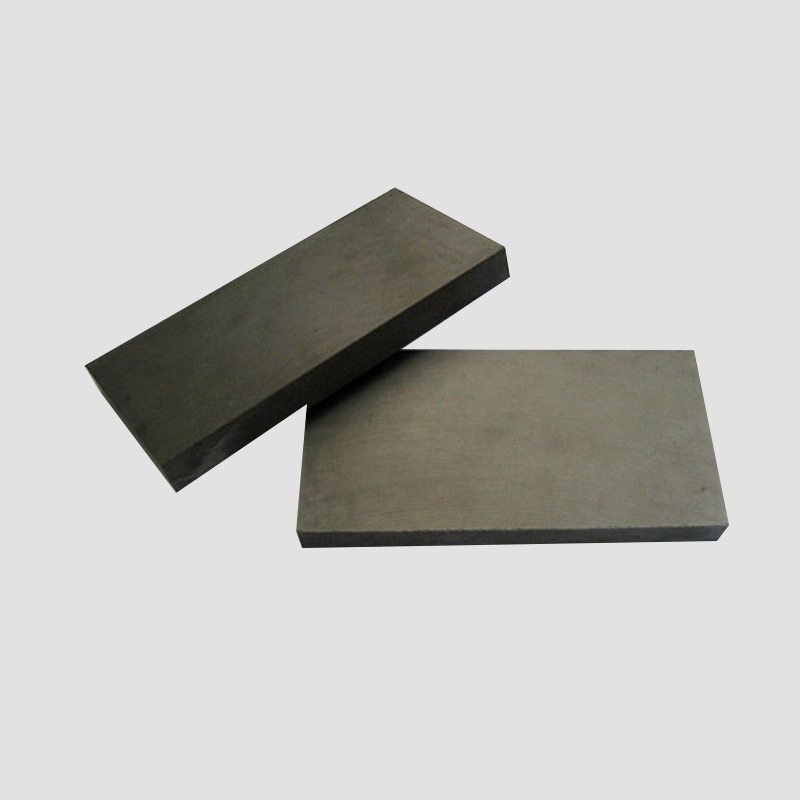Dailymag Provide a lot of different Ceramic magnet,office ceramic magnet,craft ceramic magnet,ceramic magnets
Sintered Ferrite magnet (Ceramic Magnets, Hard Ferrite Magnet) were developed in the 1960's as a low cost alternative to metallic magnets. Even though they exhibit low energy (compared with other permanent magnet materials) and are relatively brittle and hard, Sintered Ferrite magnet (ceramic magnets, Hard ferrite magnet) have won wide acceptance due to their good resistance to demagnetization, excellent corrosion resistance and low price per pound. In fact, measured by weight, ferrite represents more than 75 percent of the world magnet consumption. Sintered Ferrite Magnet (Hard Ferrite Magnet) is the first choice for most types of DC motors, magnetic separators, magnetic resonance imaging and automotive sensors.
The elements of Sintered NdFeB Magnet (Hard Ferrite magnet) are ferric oxide/barium, strontium. Ferrite has higher coercive force and higher resistance to be demagnetized and oxidized than other non-rare earth permanent magnets. The biggest advantage of such magnet is their low cost. It is widely used from motors and loudspeakers to toys and craft, industrial holding magnet etc.
Besides industrial application, Sintered Ferrite magnet (Ceramic Magnets, Hard Ferrite Magnet) are widely use in Educational area.
Everything which you need to know about the ferrite magnets
Ceramic magnets, commonly known as ferrite magnets, are one of the most prevalent magnets in use today. How well-informed are you on the subject
Ferrite magnet substance was first created in the 1950s as a less expensive option to other types of metal items, and it was subsequently improved in the 1960s. Oxide (popularly known as rusting) & strontium carbonate are indeed the two most basic materials utilised to make such magnets. A molecular conversion happens when these components are combined together at high temperatures extending from 1800 to 2000 degrees F, resulting in the ferrite substance. Ferrite magnets are by far the most often utilised permanent magnets right now due to their inexpensive cost.
Using only a flexible adhesive for the magnetite powder, a specific form of ferrite magnet is created. "Flexible magnets" is how these substances are known.
Introduction to the Materials
Sintered ferrite magnets are made of iron oxides and other components. Permanent magnets, soft magnets, and gyromagnetic ferrite magnets are the three types that can be found.
This permanent magnet is the little black magnet that most people are familiar with. Iron oxide, barium carbonate, and strontium carbonate are the most common raw ingredients. The strength of the remaining magnetic field after magnetism is extremely high, and the leftover magnetic field can be sustained for a lot longer.
Hard core ferric oxide and one or maybe more additional iron oxide combine to form a responding ferrite magnet. The remaining magnetic field is very virtually nonexistent after the magnetic field vanishes, which is why it's called a soft magnetic field. It's most commonly employed as a choke coil or the core of a middle frequency converter. The permanent ferrite magnet is not to be confused with this.
A ferrite material with gyromagnetic characteristics is known as a gyromagnetic magnet. The polarisation ground of linear polarised electromagnetic radiation rotates around the propagation path in the curriculum of spreading in that way in the substance under the activity of two non - parallel DC magnetic fields and electromagnetic wave magnetic fields in rotational magnetisation of magnetic materials. Microwave connections have long relied on gyromagnetic magnets.
Ferrite Magnet Material's Key Advantages
●Affordable yet durable; a nice blend of strength and economy.
●It is difficult to permanently remove.
●If needed, it can be magnetised with several poles.
●It doesn't rust.
Ferrite Magnet's Major Difficulties Substance
●Brittle and hard.
●Temperature will cause characteristics to decline in a linear fashion.
●Roughly 75 percent of room temperature magnetism is retained at 350°F (177°C), while about 50 percent is retained at 550°F (288°C).
Ferrite Magnet Substance Interesting Factoids
●0.180 lbs. per cubic inch density.
●The needed saturation magnetising field is approximately 10kOe.
●Sintering (the most frequent), injection moulding, extruded plastic, or elongates to that breaking point are the most popular manufacturing procedures (the last 3 methods when the material is combined with a carrier). Wet or dry pressing is possible with homogeneous sintered ferrite magnets (wet pressing leads to higher magnetic properties).
●Blocks, bars, discs, rings, arc segments, and more shapes are available.
●Grades range from 0103 to 0404. (The first two digits stand for BHmax, while the second two stand for Intrinsic Coercivity, or Hci.)
●Sintered ferrite magnets come in a variety of sizes, ranging from 10" x 4" x 1" to 10" x 4" x 1". Extrusion process ferrite (also known as flexible magnets) can be made in an infinite number of lengths. Flexible magnets, on the other hand, have a far lesser energy output than fully dense, sintering ferrite magnets.
Basic Categorization
Ferrites are classified into five categories based on their magnetic properties and potential applications: soft magnets, permanent magnets, spin magnets, moment magnets, and piezomagnetic magnets.
Magnetic Soft Material
Zinc-chromium ferrite and nickel-zinc ferrite, for example, are easily magnetised and demagnetized under a modest magnetic field. Soft magnetic ferrite is a type of ferromagnetic material having a wide range of applications, a wide diversity of properties, a big supply, and a large power value.
Permanent Ferrite Magnet
A compound with a hexagonal structure that is uniaxially anisotropic. Barium, strontium, and lead, as well as their containing particles formulations, are the most common ferrites. Magnets are divided into two types: those with the same magnetic field and those with varying electromagnetic field.
Material with a Strong Magnetic Field
After magnetic properties, ferrite strong magnetic substance is challenging to permanently remove. It is mostly employed in communications devices for microphones, pickups, speakers, and magnet cores of various instruments.
Gyromagnetic Ferrite Materials
The phenomenon of rotary magnetism in magnetic materials occurs when the polarised plane of electromagnetic radiation propagates in a defined way in the substance under the activity of two mutually right angles steady electromagnetic field and electro - magnetic wave magnetic fields, but the polarised plane rotates constantly around the direction of propagation.
Magnetic Material with Ferrite Moment
Ferrite materials with rectangle hysteretic are referred to as this. It has the property of being magnetised and absorbed when exposed to a tiny external magnetic field. When the outside magnetic field is removed, the magnetic maintains the same as when the magnet is absorbed. Instances include magnesium manganese ferrite, lithium manganese ferrite, as well as others. This ferrite substance is mostly employed in electronic memory management cores.
Piezomagnetic Ferrite Materials
Ferrite materials that are mechanically or chemically extended with in magnetic field direction whilst magnets linked include nickel-zinc ferrite, nickel-copper ferrite, as nickel-chromium magnetic properties. Piezomagnetic materials are primarily employed as detectors for reciprocal exchange of magnetic and electric energy, as well as magnetostrictive components in ultrasonography.
Applications of Ferrite Magnets
Ferrite magnets are utilised in a variety of applications, including electroacoustics, telecommunications, watt-hour metres, voice coil motors, memory elements, microwave elements, and so on. Speech, audio, visual information tapes, computers magnetic storage devices, passenger travel tickets, and sticky cards for fare collection, among other things, can all be recorded on them.
Modifications for the Magnet Surface of A material
The magnets do not require any surface treatments because they are virtually inert and do not oxidise. For hygiene, they can be covered with a variety of epoxy coatings.
Warning
Ferrite materials are extremely hard and fragile, and if dropped, they may shatter; particular caution must be exercised when managing these magnets.


